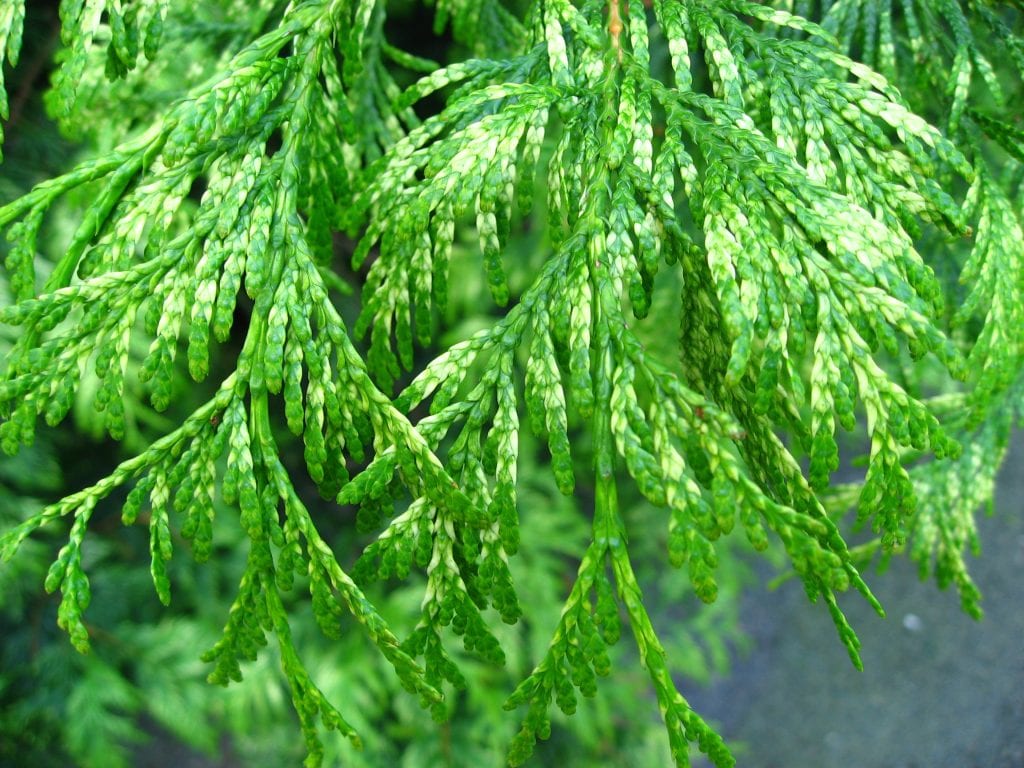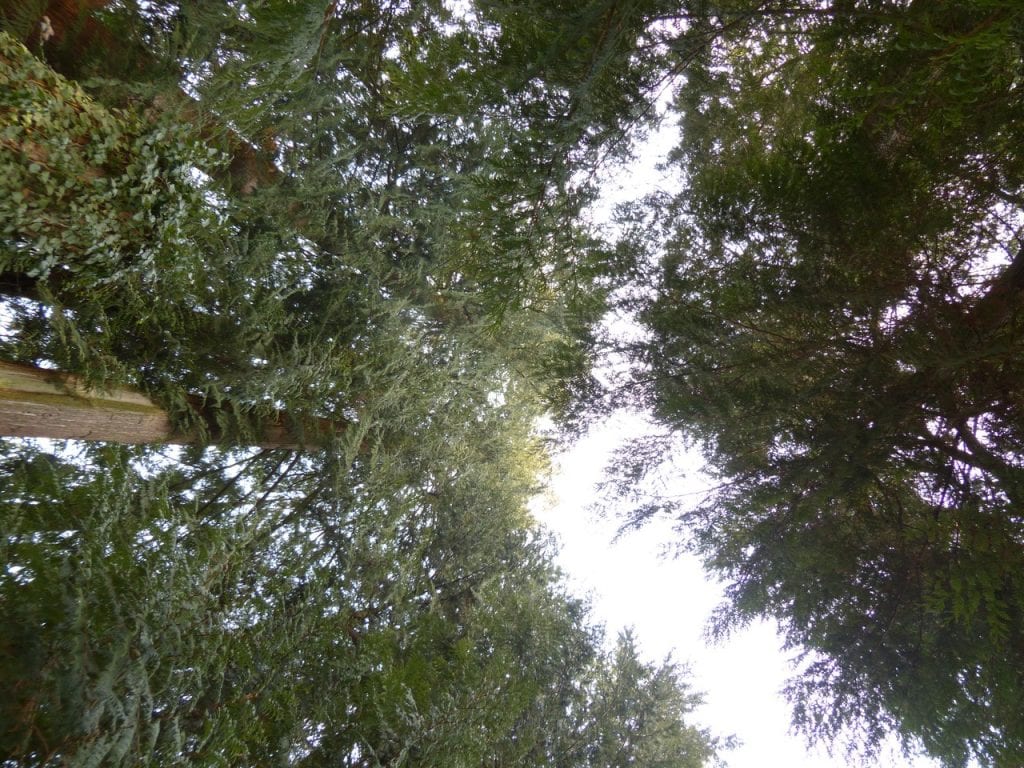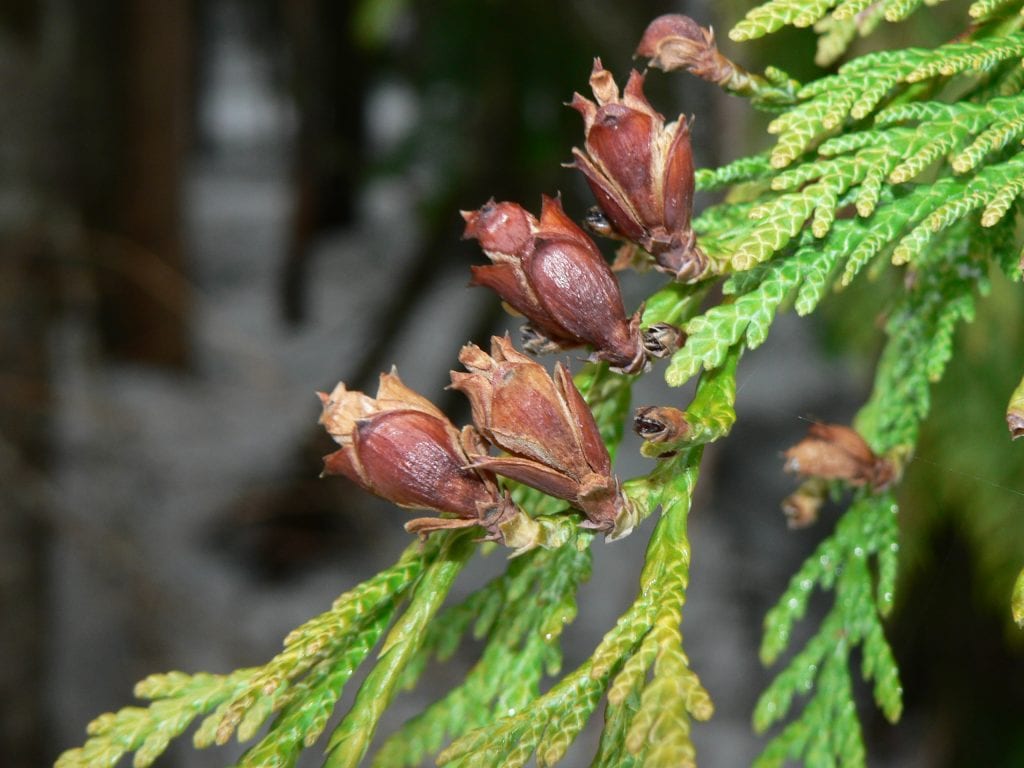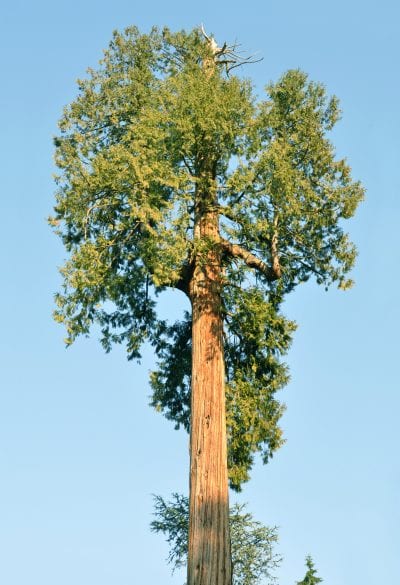
Image - Wikimedia / Liné1
In temperate climates, with fertile soil and regular rainfall, it is quite common for some trees to reach impressive heights. The thuja plicata it is one of those lucky species: its growth rate is rather slow, but it can reach 60 meters in height, thus becoming one of the most important plants in its place of origin.
But besides being very big, it is also very pretty. In fact, it's one of the most ornamental yours out there, if I may say so 🙂. Both the color of its leaves and its size make it a true natural gem..
Origin and characteristics of thuja plicata

Known as Giant Thuja, Pacific Red Cedar, Western Red Cedar, or Giant Tree of Life, it grows in the western United States. It reaches, as we said, 60 meters in height, with a straight trunk up to 2 meters in diameter.. The leaves are dark green, glossy, shiny in the upper part, and perennial, although this term can create confusion as they gradually fall.
The fruits are oval cones about 1,7cm in diameter, and are made up of 10 to 12 scales, each containing 3 seeds.
What are their cares?
If you want to have a copy, we recommend that you provide it with these care:
Location
La thuja plicata is a tree that needs to feel the passing of the seasons, so It must be put outside, in full sun or in semi-shade.
It is a large tree, which also has an extensive root system, so it must be planted at a distance of at least ten meters from pipes, paved soils, etc.
Earth
- Garden: grows in fertile, light and well-drained soils.
- Flower pot: It is not a plant to have in a pot for many years, but during its youth it will grow well in one. Fill it with mulch (for sale here) mixed with a little pearlite.
Irrigation

Image - Wikimedia / Walter Siegmund
The frequency of irrigation will vary throughout the year, but it must always be more or less regular. During the summer it will be watered an average of 3-4 times a week, and the rest of the year, with milder and / or cooler temperatures, it will be necessary to water less. For this, use rainwater or without too much lime, and do not wet its leaves if at that time the sun hits them directly as they would burn.
If in doubt, check the moisture in the soil with a thin wooden stick. In this way you will prevent its roots from having a bad time due to excess water.
Subscriber
Plants need not only water to survive, but also 'food'. Whether it is grown in the garden or in a pot, it is important to keep in mind that the roots will absorb the nutrients from that soil. If they do not recover, the thuja plicata It will gradually weaken, becoming more and more vulnerable to pests and diseases.
To avoid this, must be paid throughout the growing season, that is, from spring to late summer, preferably with Organic fertilizers, but also fertilizers for conifers (for sale here) or the one for green plants (for sale here).
Multiplication
It multiplies by seeds, which must be cold before germinating. Taking this into account, in climates with cold winters in which frosts are registered every year, they can be sown in pots with soil for seedlings (for sale here) and let nature take its course.
On the contrary, in milder climates they must first stratify in the fridge, sowing them in a tupperware with vermiculite and introducing this in the area of dairy products, fruits, etc., for three months. Once that time has passed, they are sown in seedbeds placed outside, in semi-shade.
To get the more the better to germinate, it is important not to put many in the same seedbed. What's more, if you use, for example, seedling trays (like this one they sell here), the ideal is not to put more than two in each alveolus; In the case of choosing to use pots, do not put more than 3.
Plagues and diseases
It is quite sturdy in general. Maybe I can have some cochineal, but nothing serious.
Planting or transplanting time
En spring, when the frosts have passed.
Pruning
At the end of winter it is necessary to remove the dry, diseased or weak branches, and trim those that are growing too much.
Rusticity
Resists up to -18ºC; however, extreme heat (30ºC or more) hurts it.
What uses is the thuja plicata?

Image - Wikimedia / abdallahh from Montréal, Canada
Ornamental
It is a magnificent tree, ideal for large gardens. Either as an isolated specimen or in groups, it looks great. Also, it can be used for tall hedges.
Wood
The wood of the giant thuja is used in carpentry and joinery, as well as for coatings or cooperage for example.
What did you think of this tree?